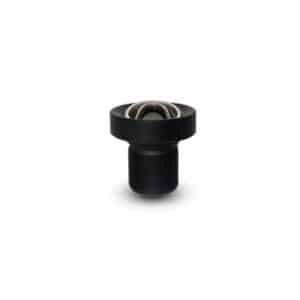M12 Lens
M12 Lens (M12 Board lens) is also known as S-Mount Lenses and Micro-Video Lenses. They focus an image on a camera sensor. These lenses are used for a wide range of applications, including automotive, forensics and pharmaceuticals. These S-Mount lenses are compact imaging lens designed to be used with many small-format industrial cameras. M12 Lenses can be used in environments with limited space or OEM applications. M12 Micro-Video lenses are a low-cost alternative to standard-sized image lenses.
Making the right choice when it comes to the precision lens

M12 Lens
A camera without lens will produce no image, or at most a greyish-snowy artifact. The precision lens selection is one of most important criteria in the selection process. There are some general guidelines to follow when choosing C-Mount and F-Mount components. The selection of M12 mounts is more difficult, due to the greater variety of lenses and sensors. The M12 is a popular choice for smaller sensor sizes and lenses, as Embedded Vision continues to grow.
M12 board lens usually available for wide angle lenses
Most M12 board lens is wide-angle lenses, which provide similar FOVs to those of F-mount and C-mount systems. This means that they have short working distances or wide FOVs. In a miniaturized setup, however, a larger viewing angle is required to achieve the same FOV as a C mount lens. Only a few telephoto lenses are available in M12 mount. There is a wide range of M12 lens available for all sensors with large fields of view.
Here’s five points to consider for optimum F12 application:
Field view – The required focal length can be calculated using the FOV and the working distance in metric units. Most calculations use stereographic projections, but wide angle lens may have a different projection. In the case of m12 cctv lens with M12 mounts, there are many distortions that can occur in the field of view. To remain independent of lens design, it is best to measure the angle of view (or field of vision) in degrees instead of using the metric focal distance.
Sensor Size – The image circle of the lens must cover the entire sensor in order to produce the highest quality image without shading or vignetting. If the sensor is smaller than the image circle of the lens, then the field is “cut off”. The greater the range of lens for M12 mount, particularly Fisheye lenses with FOVs as high as 180deg and 200deg, the smaller the sensor. Sensors can be up to 2/3″ without any special modifications.
Optimization – M12 mount lens tend to be optimized for a single application. C-mount lenses, on the other hand, are corrected for a wide range of optical aberrations. The m12 camera lens and the M12 wide-angle lens are more likely than other lenses to have color aberrations and distortion. They are also less likely to get corrected. It is important to identify which aberrations need correction and which are acceptable. If a calibration was done at initialization, distortion, for instance, could be corrected by software. It can however be corrected “in hardware” by using an element of aspherical lenses. This type of corrective m12 board lens:
- Makes the barrel of the lens longer
- The lens is more expensive.
- Plastic is often used to make many products
Working Distance – Depending on the application, M12 mount lens are optimised for a certain working distance. For security and automotive lenses, a distance greater than 0.5m is optimal. Field curvature may occur when these lenses are used at shorter distances. For close-up scanning and other applications, m12 cctv lens is designed to work at short distances.
Environment – The first thing you should consider is the environment. Is there a vibration or shock issue with the application? Are there any expected movements for cameras mounted on robot arms, on horses’ backs or on cars Does the choice of a lens depend on the amount of direct sunlight, or the type and intensity? In some applications, you may need extra color filters or wavelength correction. For passport readers, m12 camera lens needs to be able to deal with visible wavelengths, as well as infrared and UV. For surveillance, for instance, the need to detect any object at every angle requires a lens that is distortion-free. ISO-certified lenses are often required for automotive and medical applications. In robotics, depth of field can be very important. And in extreme environments like the desert, customers may need to know the minimum and maximum temperatures.
The range of lens that can be used with the M12 mounting is wide. The precision lens is the most important factor in directing light to the sensor. It must be taken into consideration regardless of the mount required. SUPERIOR Optics has the best design, engineering, and manufacturing capabilities for m12 cctv lens.




